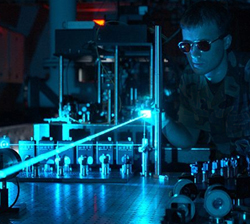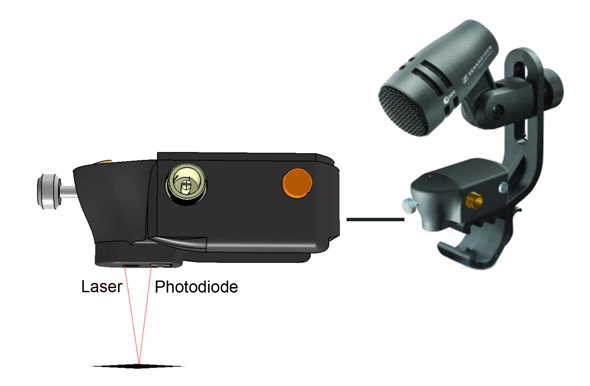The Sennheiser Technology & Innovation lab in California has created a new concept microphone designed to explore new tools for drum capture.
At its core, the Element system offers the ability to detect when an individual drum has been physically hit. This allows the engineer to carefully craft the sound of the drum set with less bleeding and tighter control over tone and dynamics.
As with previous concept mics, this prototype is aimed at sharing new ideas with our users to collect feedback and generate enthusiasm. It’s not intended to be released as a product as is.
Since there are many drums in a kit, common practice is to use many mics to capture the sound. Individual drums are given individual mics (sometimes more than one) and stereo overheads are generally used to pick up cymbals along with the overall “kit image.”
However, all of those mics end up capturing multiple copies of a single drum hit with a different delay to each channel. When the different channels are then mixed together, the delayed clones mix with the primary channel and smear out the sound of the drum in time, which reduces the sharpness of the attack and can create comb filtering.
The phenomenon is accentuated in a live setting where the other instruments on the stage are also being cloned multiple times by the drum mics—the dreaded curse of stage bleed.
Stage bleed makes mixing complicated. Effects applied to one channel also affect the bled signals of other instruments: snare hits get into tom mics, cymbals get into vocal mics, and the bass guitar seems to get into everything. This is such a problem that professional bands can often be seen with a full plexiglass cage surrounding the drum set.
One way to combat bleed is to use a gate or an expander. Ideally, this is akin to having your hand on the fader and turning the volume down in between each drum hit. Realistically, a hard snare hit is often louder at the tom mic than is a quiet tom hit. Therefore, the gates spend most of their time open and the dynamic range of the drum set suffers.
A band-passed side-chain on the gate can help separate one drum from another by isolating frequency regions specific to only that drum. However, all the engineer really wants to know is “was this drum hit or not.” So, we thought that we could approach this problem differently and find a better way to manage the bleeding.
Sennheiser evolution e904 and e604 mics are already made with a clip to secure them directly to the rim of a snare or tom drum. We added a simple laser vibrometer onto this clip to directly measure the vibration of the drum head. In this way, the vibrometer picks up the internal vibrations of the drum head before they transduce into the air. This detection method also has the benefit that it does not make any physical contact with the drum head. In opposition to a piezo pickup, the laser system has no influence on the natural acoustics of the drum.
The vibrometer consists of a laser and a directional photodiode (light detector). The coherent laser beam reflects off of the drum head and back, close to the photodiode.
When the drum head vibrates, the angle of reflection changes and the laser moves back and forth across the detector. This analog signal is driven to line level and is run into the sidechain of a standard gate. In this way, the gate will only open when the drum is physically vibrating and not just when there is a lot of noise up at the mic.
Drumming is often a physically active style of performance. Luckily, the sensitivity of the vibrometer is matched by the mechanical robustness of the mic clip.
When a drummer is emphatically playing a kit, often times the entire kit will move around on the riser. Because the clip attaches to the drum rim so securely, the laser moves along with the drum set and false triggering is still avoided.
The laser vibrometer is very sensitive. When the snare drum is hit, for example, there is enough energy to acoustically couple to the other drums and create a small movement in the heads of those drums. You can hear this in faint tom ringing after loud snare hits. The vibrometer is sensitive enough to measure these sympathetic vibrations.
However, the magnitude of sympathetic vibration is still less than the vibration from a direct hit. Therefore, the threshold of the gate can easily be used to distinguish between an intended hit and vibration from a neighboring hit.
Sennheiser Element – Laser Drum Microphone System from Andy Greenwood on Vimeo.
Andrew Greenwood is an audio software engineer for Sennheiser Electronic Technology & Innovation.





















